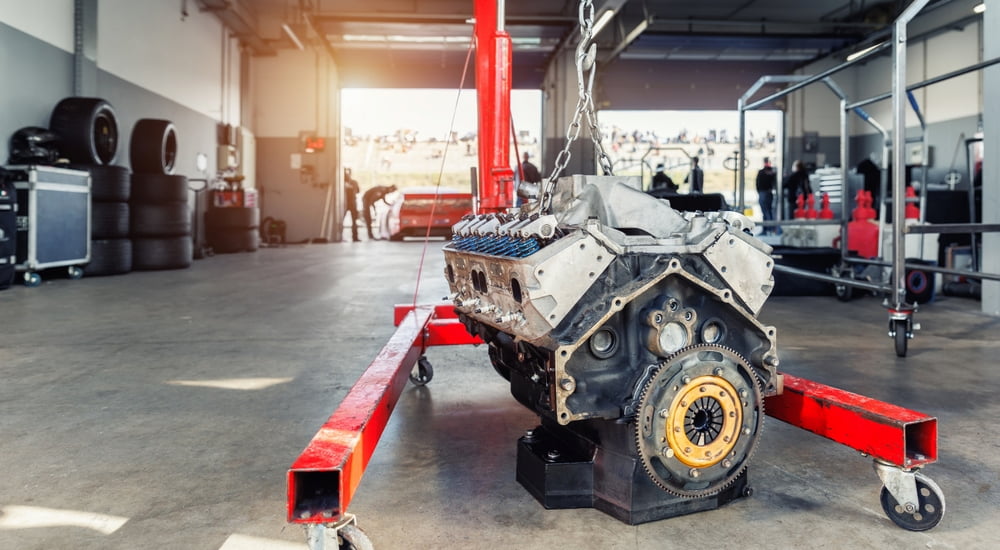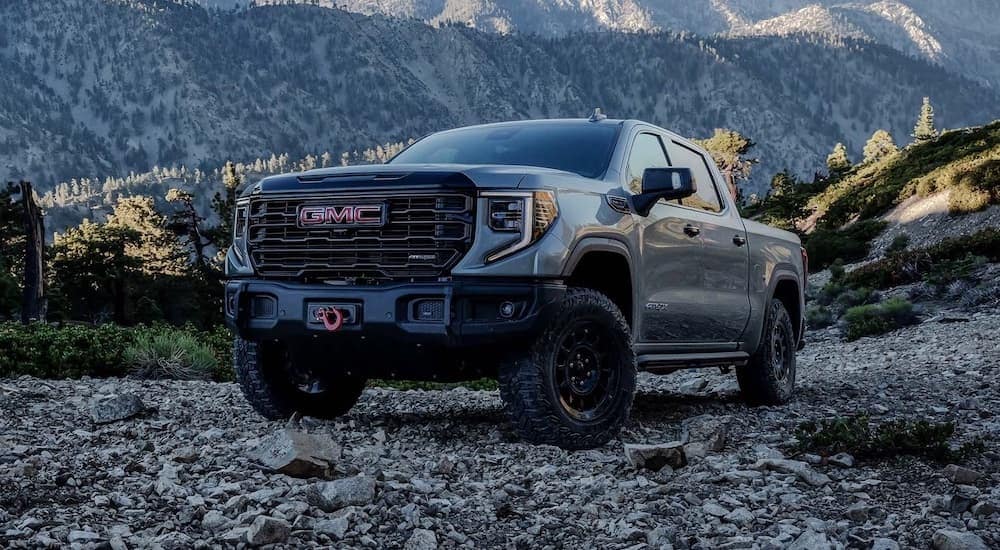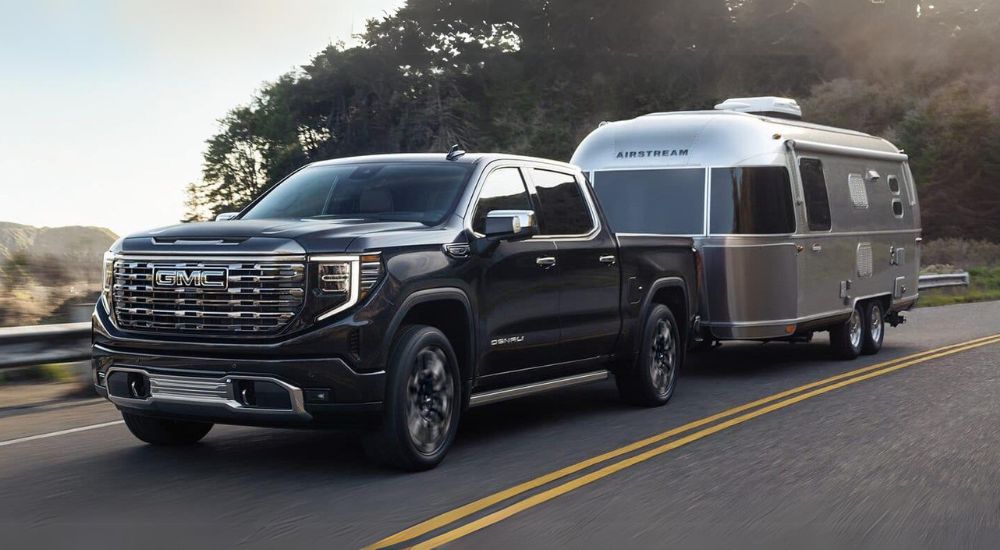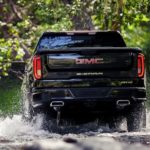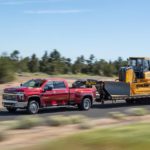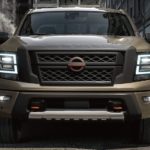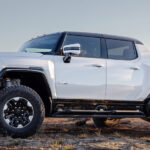Much of the full-size truck and SUV world—and the automotive world in general—is moving towards putting turbocharged engines under the hood. According to data from the Office of Energy Efficiency & Renewable Energy and Research Nester, the percentage of new US light-duty vehicles with turbochargers has gone from 1% in 2000 to about 50% today. From the Ford F-150 to the Toyota Tundra, seemingly every automaker now relies on turbochargers for their full-size machines, with a turbo V6 usually the ammunition of choice.
Everyone, that is, except General Motors. When you’re trying to find a Silverado 1500, Suburban, Tahoe, or Sierra 1500 for sale, you won’t find a single turbocharger on any of their gasoline powerplants. Instead, they continue to rely on naturally aspirated V8s for the power drivers need. Furthermore, there are no apparent plans to go the turbo V6 route in full-size trucks anytime soon.
This leads to the question of what the future holds for their venerable V8 collection—especially within the greater picture of the shift to EVs. I decided to investigate and see if I could find a good answer to this pressing question. Doing so will require answering several sub-questions, including why the turbocharger shift is happening in the first place and why GM continues to hold out on this front. Here’s the landscape I uncovered and what shifts may occur going forward.
Why Are So Many Automakers Going Turbo?
Before even answering this question, I should recap what a turbocharged engine is. This “forced induction” design captures exhaust gasses generated by the engine’s normal function, compresses the gasses, and pushes them back into the combustion chamber. Note turbochargers are different from superchargers, which get their power directly from the engine rather than the exhaust. Using a turbocharger has many advantages, which explains why automakers and consumers are attracted to them. Here are the main benefits of turbochargers:
More Horsepower
It’s estimated that a 200-hp naturally aspirated engine will jump to as much as 280 hp with a good turbocharger. This “on demand” added power doesn’t require increasing the engine size, giving you more options.
Fuel Mileage
Since engines work more efficiently with a turbocharger and weigh less than a non-turbo engine with the same max horsepower, they tend to get better gas mileage overall. This saves people money on fill-ups and helps automakers meet national/international emissions standards.
Less Noise
By capturing the exhaust gasses before they exit, a turbocharger makes the engine quieter. This is highly beneficial when driving in neighborhoods and high-traffic areas.
More Driving Fun
This is more subjective, but it’s generally accepted that the added power and acceleration of a turbocharged engine make driving more exciting. It also gives them more versatility for downtown, highway, and off-road environments.
Why Has GM Resisted the Turbo V6 for Its Full-Size Trucks?
I should say that General Motors hasn’t refused turbochargers altogether. Smaller trucks and SUVs like the Chevy Colorado and Traverse proudly sport turbo engines and many full-size vehicles like the Silverado 1500 and 2500 HD have a turbo-diesel option. Chevy also introduced a turbo four-cylinder option for the Silverado when they unveiled the fourth generation in 2019. However, they continue to stick to non-turbo V8s instead of turbo V6s as the engines in full-size trucks, with the 5.3L V8 and the 6.2L V8 being the current options.
How come? For starters, there are a few drawbacks to turbo engines that may come into play:
Turbocharged engines are more likely to need mid-grade or premium gas, which is more expensive. As I write this, the US national average price for regular gas is $3.519 per gallon, while premium gas is $4.323 per gallon—a 22.9% difference that may well offset the cost of better gas mileage.
Turbocharged engines require more maintenance and repairs since they have more moving parts that can fail, increasing the cost of operating them. This includes using higher-quality oils and filters that must be changed more often. Perhaps most relevant for trucks is that turbocharged engines can present some challenges with towing. Because the engine is smaller, it doesn’t generate as much torque in its un-boosted state. You’ll thus have to use the turbo frequently, which hurts the gas mileage and wears the turbo system out faster.
The story of GM refusing to go turbo with their full-size trucks isn’t new. In 2013, Autoweek asked GM President of North America Mark Reuss if they would use the then-new LF3 3.6L twin-turbo V6 engine for their full-size pickups. While acknowledging they would consider such a move if there was a clear market demand for it, Reuss added, “We’ve got three technologies in a V8 that beat (the LF3) from a fuel-efficiency standpoint at a much different price point…I wouldn’t say we’re never going to do that. That would be foolish. Is that something we’re going to rely on as our play? No.”
In other words, GM believes the naturally aspirated V8 is simply a better engine option when considering the demands of a full-size truck or SUV. Even with the success of the Ford F-150 and other trucks that went the turbo V6 route, GM is holding strong in that assessment—and the sales numbers back them up. The Silverado cratered from 705,981 US vehicles sold in 2005 to 316,544 in 2009. Since the third generation rolled out in 2014, the Silverado has exceeded 520,000 units every year.
The Chevy Suburban is also holding strong. Except for 2020, which combined the COVID-19 pandemic and the final year of the 11th generation, the Suburban has topped 50,000 units every year since 2012—and after the 2020 lull, it rebounded to 85,000-plus in 2021. For good measure, the Cadillac Escalade has hit new heights, selling more than 40,000 units in the US every year from 2021 to 2023.
What’s Next for GM’s Full-Size Truck Engines?
Eleven years after publicly stating their commitment to V8 truck engines, the automotive landscape has changed. Not only are turbocharged engines now widespread, but electric vehicles are taking hold. EVs and plug-in hybrids combined for nearly 9% of new vehicle sales in 2023, with conventional hybrids making up another 8%. It’s a turbocharged, electrified world that GM is navigating. GM has even stated numerous times that it plans to have all its new light-duty vehicles fully electric by 2035.
But in the meantime, GM isn’t just holding firm with V8 truck power—it’s doubling down. In early 2023, GM announced it would invest more than $850 million in a quartet of US manufacturing facilities so they could produce the sixth generation of the company’s small-block V8 engine. No further information has come out since then, so the timeline for the engine’s development and release still isn’t known, but expectations are they will use it in the Chevy Silverado, GMC Sierra and Yukon, Cadillac Escalade, and other full-size vehicles. Autoweek even theorized that the profit from the new engine would be what helps pay for new EV battery developments.
Suffice it to say that the V8 engine isn’t going away yet. There’s still a demand for it based on sales numbers, and it still has advantages compared to a turbocharged V8. As long as US buyers still want V8 trucks and SUVs, it’s reasonable to believe GM will continue making them. And frankly, I’m intrigued to see what the sixth-gen small block V8 can offer. Considering the fifth-gen 6.2L V8 currently in the Silverado/Suburban/Tahoe/etc. has 420 hp and 460 lb-ft. of torque, I imagine the next generation will have even more for people who like big, brawny trucks.
